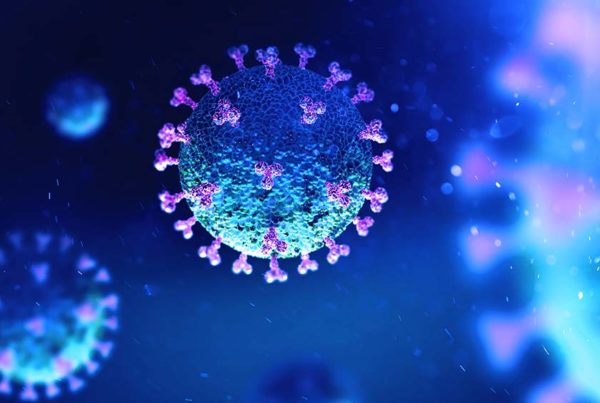
The who, what, when, where, why and how it can happen to anyone, including health practitioners and patients, athletes and dieters, teachers and students, mothers and fathers, you and me.
Everywhere you look people are stressed out or, correspondingly, burned out. It’s not just those in high-pressure jobs or weathering a personal crisis. It’s an epidemic among people from all walks of life, athletes, and even healthcare professionals.
Consider the following testimony:
“I gradually became physically and mentally exhausted. Exercise, socializing, sex, even getting through a typical work day was now a serious struggle. I would stand outside the exam room door sometimes for 10 minutes, pretending to read the chart, trying to generate the energy to walk in and hear the patient’s complaints. Not only could I not deliver good care, it eluded me personally. Fighting to stay awake while driving home, I couldn’t sleep at night, feeling just as bad each morning. Medicating with more morning caffeine no longer helped, nor did more evening alcohol, nor did days off. I saw no way out of the nightmare.” —Anonymous health practitioner.
Imagine this was the president or other head of state dealing with an international crisis, an athlete preparing for a championship performance, a student cramming for exams, or even your doctor.
Burnout is a function of stress. More specifically it’s the accumulation of excess stress we don’t recover from. It’s been referred to as exhaustion, nervous breakdown, and in those who exercise, overtraining. Whatever term we use, it significantly impairs health and fitness — the physical, biochemical, and/or mental-emotional body breaks down.
Two new studies with an accompanying editorial in the Journal of the American Medical Association didn’t help the reality of what virtually everyone in healthcare already knows — very high numbers of practitioners are impaired due to burnout. So are many patients, and healthcare students. While the JAMA articles claim no consensus on a definition of burnout, concluding that “more research is needed,” while the problem everyone knows about, including an understanding of its physiology, goes untreated.
While the research indicates that many doctors are miserable and depressed, with suicide rates rising, researchers wonder whether burnout is even the right word. The result is the elephant in the room goes ignored — despite the thousands of published studies on the topic known as stress, another term for burnout, over the past century. The problem is so prevalent it was referred to by a surgical journal as “an undiagnosed pandemic.” Not only are these practitioners not being cared for, but the quality of care they are delivering is questionable too, with many patients suffering as a result.
While there is an overwhelming burden of paperwork (yes, they actually still use reams of paper) and time spent on the electronic medical records, with less time treating patients, the quality of patient care is a serious concern too, just as much as the practitioner’s own health. Excess stress exists everywhere in healthcare.
A look at the bigger picture makes matters even worse: the problem of burnout in healthcare practitioners is only the tip of a very big iceberg. It includes, potentially, everyone else on earth.
The Stress of Life
We are constantly exposed to many kinds of stressors, categorized as physical, biochemical, and mental-emotional. These can come from exercise, or lack of it, sleep, food, pollution, drugs, and from our own thoughts. However scary this sounds, for most people the road to recovery is clear.
Normally, we adapt to these stressors through the process of recovery, especially by resting and specifically, a good night’s sleep. Adaptation to acute stress involves the brain sending messages, through hormones and nerves, to the body to adjust itself, compensate, or better deal with the stress. The adrenal glands make more stress hormones to accomplish this, and the sympathetic nervous system goes on high alert. After the wave of stress passes, we typically return to normal.
Stages of Excess Stress
Poor adaptation, however, is the result of too many stressors, not enough recovery, or, typically, a combination of both. By not adapting, stress continues to have an adverse effect on us each day. This is referred to as the first stage of excess stress. Fortunately, recovery from it can be relatively quick — it could take only days if we merely reduce the stress and rest. This is actually how exercise and training works to make us stronger.
Without adaptation, however, when we don’t recover from this acute stress, it can become chronic and we enter a more serious second stage of stress. The range of warning signals can be seemingly benign or extensive. Early in the process, people may complain generally of “just not feeling right.” Excess fatigue or hunger, reduced creativity, feelings of depression, anxiety, blood-sugar problems, poor sleep, muscle soreness, pain, higher heart rate, daytime sleepiness, cravings for sweets or caffeine, memory loss, and others are not uncommon. Reduce immunity, with vulnerability to infections, and intestinal dysfunction causing mild to more severe symptoms are also typical. Signs and symptoms can worsen to include poor posture and gait, chronic inflammation, waking in the middle of the night and being unable to quickly fall back to sleep, increasing body fat (and weight), hormone imbalance, reduced physical and mental performance, or chronic pain. Recovery from the second stage of stress takes longer, typically weeks, and only when we reduce enough stressors and recover with better sleep quantity and quality.
Without recovery from the second stage of stress, we can go into stage three; a chronic disabling condition that takes a long time to recover from, and that usually requires help from a healthcare practitioner(s).
The earliest condition of burnout appears during the first stage of stress, and is more obvious by the second and third stages.
Chronic stress ages us faster, continually pushing us toward the development of chronic diseases, such as diabetes, cancer, cardiovascular disease, Alzheimer’s and others, not to mention many types of physical disabilities.
The Fix
Three specific lifestyle factors play a primary role in stress adaptation, allowing the brain, hormones and the rest of the stress-adaptation mechanism to function well. Without these we can’t recover well.
- A healthy diet. Junk food, especially excess sugar, is such a significant stress that it could, by itself, throw someone into chronic stress and burnout.
- Physical activity is also important, with too little or too much, or too much high-intensity, contributing significantly to stress.
- Sleep is how we recover most: each night, 7-9 hours of uninterrupted sleep.
While other lifestyle factors may help — meditation, yoga, mindfulness, talk therapy — the three above are a prerequisite.
Many people deny that stress adversely affects them, feeling too proud, wanting to avoid the image of being mentally weak, embarrassed or ashamed. This is due to the myth that stress is strictly psychological, and we should somehow be stronger than that. Without understanding there are many other (controllable) stressors bombarding the brain and body, people keep pushing on — more work, more money, more commitments and responsibilities, etc. And, of course, this also usually means less time for fun — another way to help adapt to and prevent the excess accumulation of stress.
Unlike iron-deficient anemia, for which a blood test confirms the diagnosis, excess stress is not an easily determined condition. Burnout also is not so definitive. Yet, depression, anxiety, fatigue and other symptoms, along with a variety of signs such as increased levels of the stress hormone cortisol and increased sympathetic activity that can raise resting heart rate and blood pressure, are quite clear. In reality, excess stress can affect us in so may ways. The initial clues that we’re not adapting include fatigue, hunger, intestinal distress, poor immunity, cardiac and hormonal problems, muscle and bone problems and others. Cardiovascular disease, cancer, diabetes, Alzheimer’s and other end-stage conditions are the longterm diagnosis.
One would think that after almost 100 years of scientific and clinical research on this topic, we could overcome the relatively minor details of definitions, measurements and even politics to recognize and address the real problem, at least in the very population of people who should be helping patients overcome the same problems prevalent in them.
Modern stress
There is no doubt that the risk of burnout has haunted humans from the beginning. For a long time, it was simply survival from day to day, protecting the children, or avoiding being chased and eaten by a ferocious furry creature. So what’s so different today?
Today, humans don’t balance their accumulated stresses with healthy food and physical movement. In short, we don’t adapt as well to the stress of life, despite or in spite of, the luxuries many have. Recovery from a day’s stress often goes undone, and the next day we accumulate more of it.
While high levels of acute stress are inevitable in some situations, such as an intense work period in emergency medicine, a crisis for heads of state or corporate executives, or natural disaster, crossing the line from chronic stress to burnout, is, for the most part, preventable. And, existing conditions of excess stress are treatable conservatively, especially with self-care.
Those temporary stress modes can actually help us. Being on high alert makes us think better, respond faster, and literally get stronger. But we must adapt.








